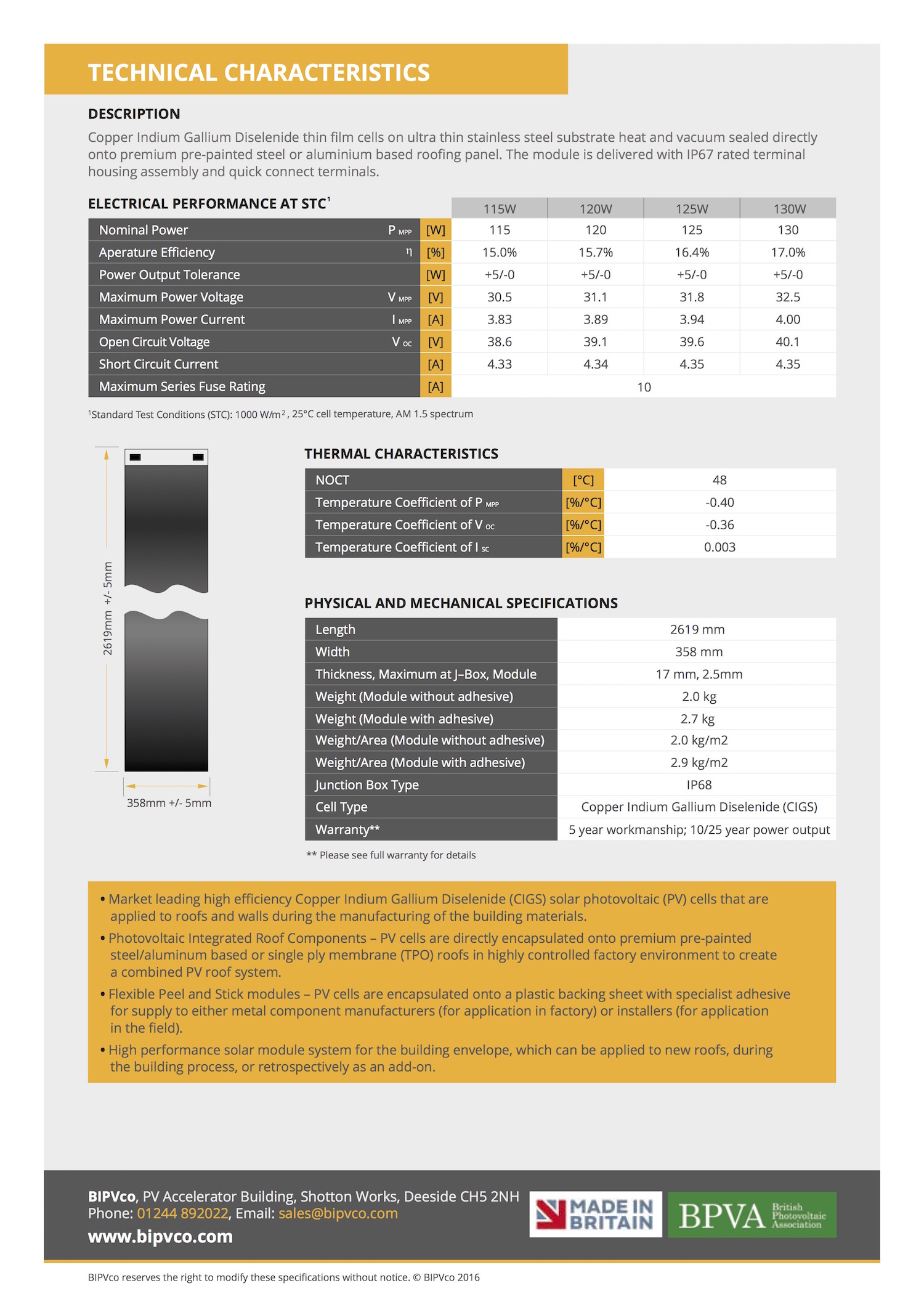This is one in a series of blog posts about the materials we’ve chosen to build our Zero House project…
What are BiPVco Flextron solar modules? BiPVco specializes in the manufacturing of building integrated photovoltaics, that is, solar modules that are a part of the building, rather than “add-ons” that must be fastened over or onto the building.
Where are BiPVco Flextron solar modules used in Zero House? The standing seam metal roof on the south side of the building receives 32 modules that each produce 120 watts of power, for a total of 3,840 watts (3.84 kW). We use a company that does sheet metal fabrication Texas. These parts are hand delivered to us.
How do BiPVco Flextron solar modules help achieve the Zero House goals?
- Zero net energy use – The solar energy harvested from the BiPVco modules over the course of a year will equal the amount of energy it takes to operate Zero House.
- Zero carbon footprint – The modules use a flexible, CIGS thin-film technology that does not require the tempered glass or aluminum frames of typical modules, and combined with the elimination of mounting racks, the BiPVco modules have a significantly smaller carbon footprint than other solar modules (67 kgCO2e/m2 versus 242 kgCO2e/m2 for monocrystalline modules, according to the Inventory of Carbon and Energy V.2).
- Zero waste – The flexible modules are highly resilient and require only a fraction of the packaging for glass-covered modules.
Other reasons for using BiPVco solar modules:
- Durability – We don’t need to make any penetrations in the roof surface to mount the BiPVco modules, which is a huge advantage in terms of long-term durability of the roof. There is also no glass to break in case of hail or falling tree branches.
- Affordability – The modules are comparable in price per watt to standard modules, but the savings on racking and mounting make them a very attractive option price-wise. Roof trusses do not need to be sized to take an extra load, as the modules are very light weight and don’t present any wind uplift issues.
- Prefab – We can mount the modules to the roofing and ship them together to the building site, eliminating a separate shipping step and construction step on site.
- Code compliance – BiPVco does not yet have CSA certification, and requires a field inspection.
Any drawbacks to using BiPVco solar modules?
- The adhesive that binds the modules to the metal roofing seems very strong, but only time will tell how it holds up the Canadian climate.

